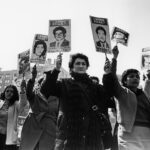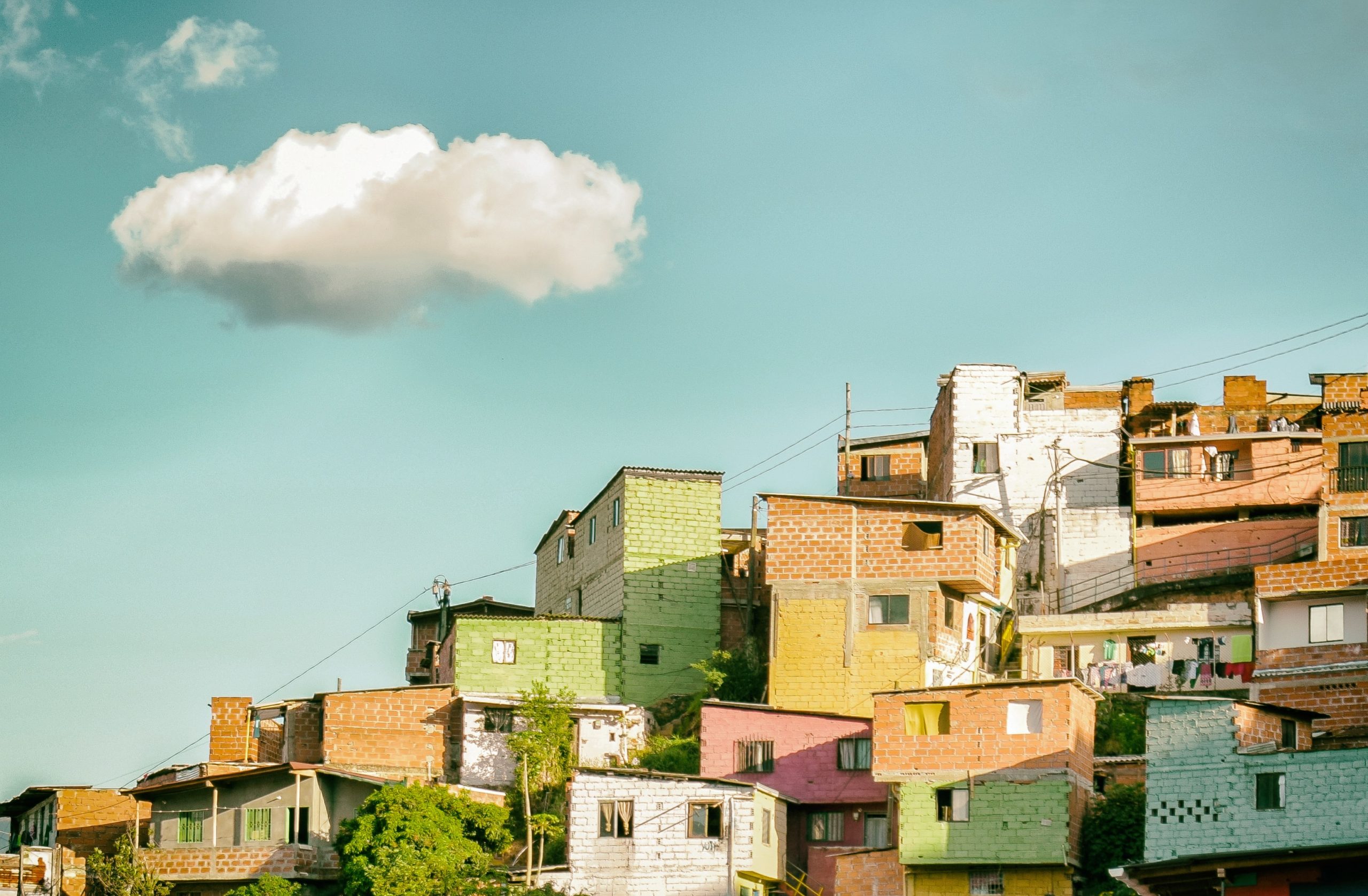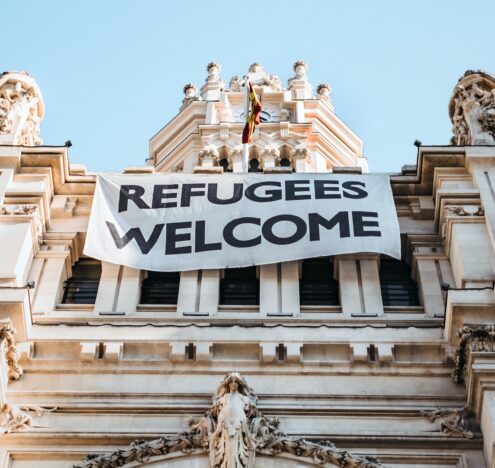August 9, 2014 is a day that I don’t think I will ever quite forget. That afternoon, in a town just a few hours northeast of my hometown of Springfield, Missouri, 18-year-old Michael Brown was shot and killed by police officer Darren Wilson. The shots, heard across the country, pierced the bubble of white privilege that surrounded me and concealed the systemic injustices within our country. No longer do we collectively look at the relationship between police and the communities they serve in the same light. For many in my home state, Ferguson was the inflection point where viewpoints changed forever.
Events that we’ve watched unfold in Colombia over the past few weeks echo eerily familiar moments of despair and grief to what happened in Ferguson. Like Ferguson, I believe the events that have transpired in Colombia since April 28 should be an inflection point in US foreign policy that causes us to reexamine our relations with the Colombian military and our implicit support for the decades of brutality and repression currently on full display.
WHERE WE ARE AND HOW WE GOT HERE
Since April 28, protests have wracked Colombia. At first, they focused on mass discontent with “La Reforma Tributaria,” a proposed tax reform by President Iván Duque that would have dramatically spiked the prices of everyday items like bread, milk and eggs, and raised taxes on the poorest Colombians. A country with a current unemployment rate of about 14%, many people were outraged that the government was seeking to engage in such drastic measures of austerity, especially while the COVID-19 pandemic continues to decimate communities. Police forces, particularly the “Escuadrón Móvil Antidisturbios” or “The Mobile Anti-Disturbance Squadron” (ESMAD), began to brutally crack down on protesters. To date, at least 40 Colombians have been killed by the police so far and hundreds have been reported injured, though activists on the ground say the real numbers are likely much higher. Though President Duque quickly retracted his proposed reforms, the damage was already done. Colombians all around the country are now standing up and demanding an end to their country’s long history of police violence.
Though this is clearly a crisis, it’s not one that could have not been foreseen. In both November 2019 and September 2020, similar violent crackdowns by police led to countless deaths and injuries. Shockingly, this time around, the police are even being more hostile and violent than before. As one might imagine, the poor, LGBTIA+ Colombianxs, “campesinos” (small-scale farmers), women, young people, and other marginalized groups have been those most targeted by ESMAD.
The growth of such an aggressive police state in Colombia did not happen in a vacuum — it was aided and encouraged by US policy.
The growth of such an aggressive police state in Colombia did not happen in a vacuum — it was aided and encouraged by US policy. Since the Clinton administration, the United States has dumped tens of billions of dollars in security infrastructure in Colombia, often under the guise of countering narcotrafficking. In multiple instances over the last 30 years, we have seen these tools, trainings and intelligence capabilities used to repress the Colombian people. For example, from 2002 to 2008, the Colombian military lured at least 3,300 mostly poor, unemployed, or mentally challenged people into false promises of work. Once alone, these people were murdered, dressed in the outfits and paraphernalia of guerrilla groups, and declared slain rebel fighters. This has been termed the “false positives scandal.” Even more horrifically, recent reporting suggests that even more people than initially thought were murdered by the military in this way — as many as 10,000 innocent people. Even more recently, the Colombian military was caught illegally spying on local and international reporters and building extensive profiles on their political leanings, family, and friends.
Despite these many well-known instances of state brutality and abuse of power, the United States has continued to support the Colombian military. Thus, it is clear to see why the rise of domestic-facing, state-sponsored violence at home is directly and inextricably linked to increases in such violence abroad, particularly in the case of Colombia. This is obviously a crisis, but it is precisely because of this long history of involvement that the United States is uniquely positioned to pressure the Colombian government to stop this needless bloodshed and further commit to building peace.
WHAT THE US CAN DO
In the battle to reform policing — to make it more just and safer for all involved, including the police officers themselves — the United States must not only address the domestic sin of aiding and abetting police brutality, but also its support for such practices abroad.
Most immediately in Colombia, the United States must first issue strong condemnations of the actions taken by Colombian security forces. Though the State Department has issued statements, something coming directly from President Joe Biden would send a strong message. Second, the United States must suspend the sale and distribution of crowd control equipment to Colombia’s security forces. This should include the suspension of all sales of weapons and training to ESMAD. Third, the Biden administration must redouble efforts of conditioning all security-focused aid on compliance to international human rights standards, building on the 2016 peace accords, and engaging with a representative group of human rights defenders and protesters.
As one Colombia expert in Washington, DC once told me: “Colombia is complicated. Anyone who says otherwise is not paying attention.” In this spirit, one can confidently say that there is no simple antidote to prescribe to solve all the myriad of issues plaguing this resilient, complex, and beautiful country. What’s more, it’s not the place of the United States to dictate the terms of peace on behalf of the Colombian people. However, the US government can at least stop contributing to making the crisis worse.
After all, this is more than simply a moral issue — it is a strategic one. Continued impunity by the police and their allies in extremist paramilitary groups aggravate pre-existing tensions within society and undermine the hard-won peace agreement signed between the Colombian government and the FARC-EP guerrilla group in 2016, a peace deal that seeks to end more than 50 years of fighting. Further action is needed to reaffirm these accords, seriously implement them and forge new agreements with other armed guerilla groups like the ELN. Helping to end the near-constant state of internal conflict in Colombia — a key US ally — is critical for furthering engagement in the region.
A friend and protester in Bogota, Isaac, told me,“What we need right now is for the government to make an effort to have a conversation with everyone, not only the big politicians that have always been in the picture, but also people who are the most affected for violence and [inequality]” including “the poor and indigenous groups.” While the United States may not be able to make that happen, the Biden administration should use all the diplomatic tools at its disposal to encourage the government to do so.
THE CONFLUENCE OF MOVEMENTS
In the United States, we often hear BLM activists ask us to “say their names.” Saying their names reminds us that Mike Brown, Philando Castille, George Floyd, Breonna Taylor and so many others are not numbers — they are people. These people were fathers, sons and daughters, friends and neighbors — people who were loved and deserved justice, protection and happiness. The 40 Colombians who have been killed so far during these protests since April 28 deserve no less. They are not numbers, they were people who deserved protection. Colombia is a country that deserves better than this constant state of fear and chaos. My friend Jesús said it best this past week, “You know what’s sad? Colombia is a really beautiful country. Its people are kind and happy. But the world doesn’t know that, they only know all of the bad things.”
US taxpayer dollars shouldn’t be used to fund state-sponsored violence anywhere; not in Bogotá, in Sheikh Jarrah, and certainly not on the streets of Ferguson. The current implicit support for this violence in Colombia is not only obviously morally bankrupt, it is completely nonsensical from a strategic standpoint. Strongly condemning the actions taken by the military, suspending the distribution of crowd control equipment, and getting serious about conditioning military aid are some of the key points of leverage the United States has to pressure the Duque government to end this violence.
Certainly, this campaign will be neither quick nor easy, and the Biden administration has no shortage of crises on its plate. However, I argue that this is an issue that the United States simply cannot ignore — for the sake of Colombians or for the sake of the wider pursuit of justice both at home and abroad.
Daren Caughron is a foreign policy researcher in the DC area. A huge thank-you to Jesús and Isaac for their contributions to this article. Last names have been redacted for their own safety.





















